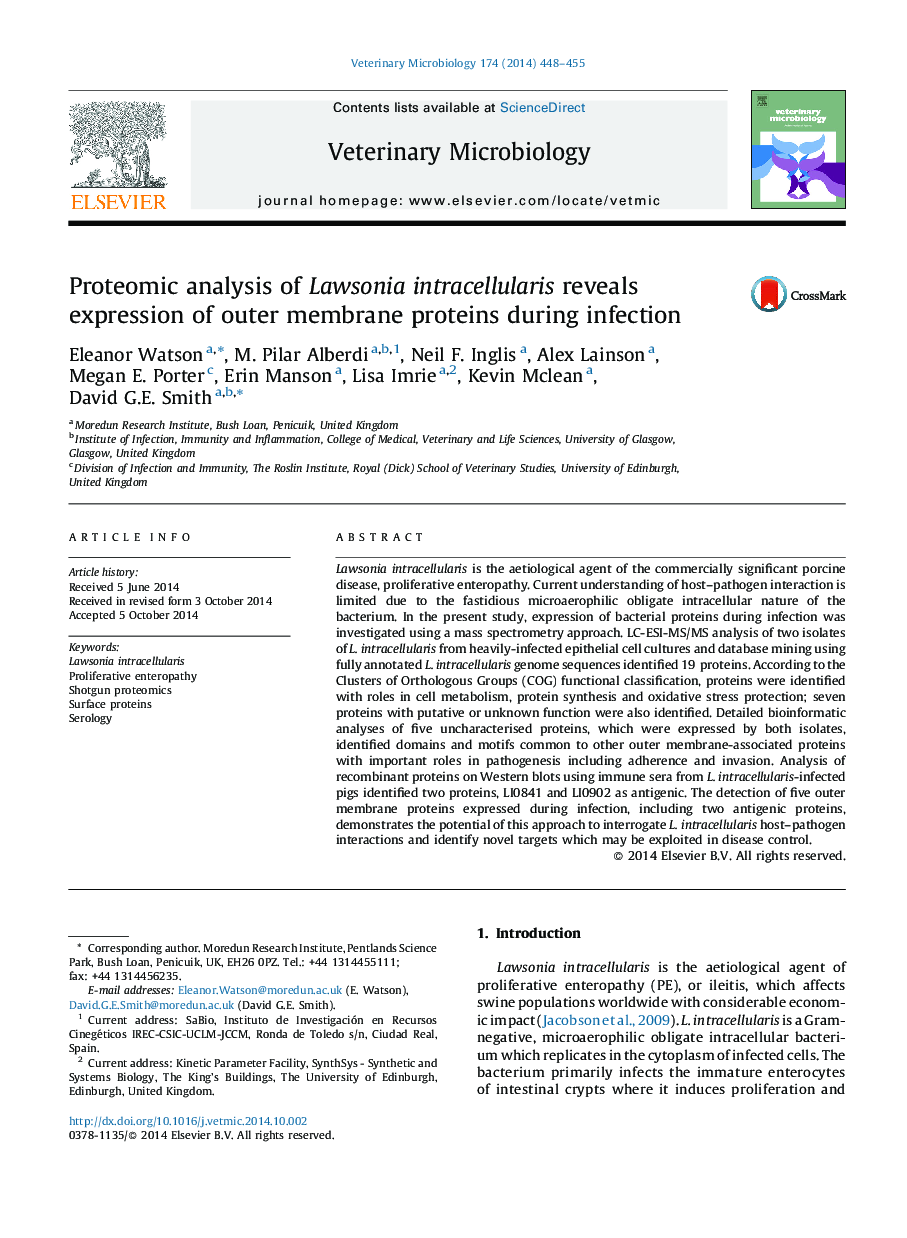| Article ID | Journal | Published Year | Pages | File Type |
|---|---|---|---|---|
| 5800395 | Veterinary Microbiology | 2014 | 8 Pages |
â¢Identification Lawsonia intracellularis proteins by LC-ESI-MS/MS.â¢Bioinformatic analysis identifies outer membrane proteins.â¢Serological responses to three proteins are investigated.
Lawsonia intracellularis is the aetiological agent of the commercially significant porcine disease, proliferative enteropathy. Current understanding of host-pathogen interaction is limited due to the fastidious microaerophilic obligate intracellular nature of the bacterium. In the present study, expression of bacterial proteins during infection was investigated using a mass spectrometry approach. LC-ESI-MS/MS analysis of two isolates of L. intracellularis from heavily-infected epithelial cell cultures and database mining using fully annotated L. intracellularis genome sequences identified 19 proteins. According to the Clusters of Orthologous Groups (COG) functional classification, proteins were identified with roles in cell metabolism, protein synthesis and oxidative stress protection; seven proteins with putative or unknown function were also identified. Detailed bioinformatic analyses of five uncharacterised proteins, which were expressed by both isolates, identified domains and motifs common to other outer membrane-associated proteins with important roles in pathogenesis including adherence and invasion. Analysis of recombinant proteins on Western blots using immune sera from L. intracellularis-infected pigs identified two proteins, LI0841 and LI0902 as antigenic. The detection of five outer membrane proteins expressed during infection, including two antigenic proteins, demonstrates the potential of this approach to interrogate L. intracellularis host-pathogen interactions and identify novel targets which may be exploited in disease control.
